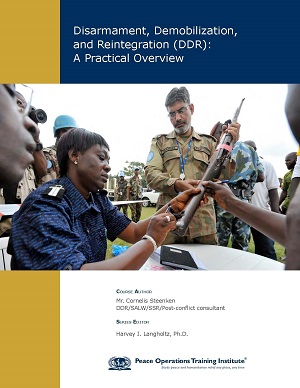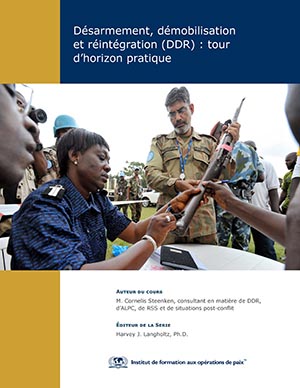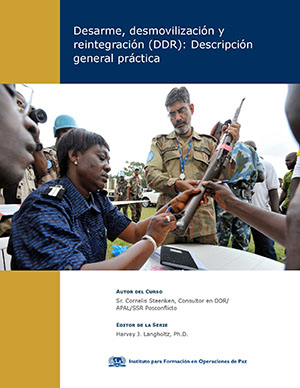About the Course: The transition from civil war to sustainable peace is a difficult one. Successful disarmament, demobilization, and reintegration of ex-combatants are essential for this transition. While the objectives of DDR are broad, it must be carefully planned and executed to enhance security, support development, reduce government expenditures, and remove impediments to democracy. DDR should be viewed as a holistic process, not discreet steps. The success of any programme to support DDR is closely linked to the political, economic, and security situation of the country where it occurs.
The 2017 edition of this course includes the latest recommendations and strategies for DDR practitioners in the field and recent United Nations doctrine, including the 2014 UN Integrated DDR Standards (IDDRS). This version also examines recent DDR processes and programmes, such as Colombia’s Agencia Colombiana para la Reintegración. Seven lessons. About the Author: Cornelis Steenken is a DDR/SALW/SSR/Post-conflict consultant. He joined the Canadian Navy in 1975 and graduated from the Royal Military College in 1980, serving in numerous staff, command, exchange, training, and operational positions onboard ship and ashore. He has served as a UN peacekeeper in the field. He was Director of DDR Programmes at the Pearson Peacekeeping Centre in Canada and co-authored the DDR Handbook "A Field and Classroom Guide". Steenken initiated the Integrated DDR Training Group (IDDRTG) and contributed to the creation of the IDDRS. He teaches DDR courses around the world.Number of pages: 237 [English]
Publisher: Peace Operations Training Institute [13-07-2017]


